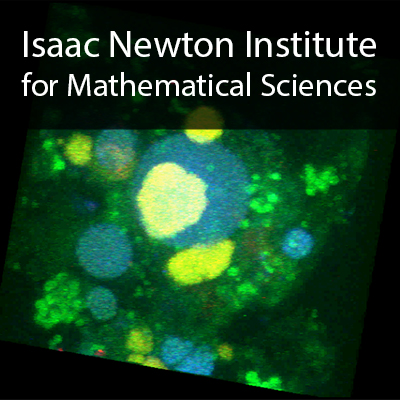Plenary Lecture 17: Modeling biofilm formation in porous media and fouling in membrane processes
40 mins 23 secs,
326.10 MB,
WebM
640x360,
29.97 fps,
44100 Hz,
1.07 Mbits/sec
Share this media item:
Embed this media item:
Embed this media item:
About this item

| Description: |
Picioreanu, C (Delft University of Technology)
Friday 28 November 2014, 11:55-12:30 |
|---|
| Created: | 2014-12-02 12:10 |
|---|---|
| Collection: | Understanding Microbial Communities; Function, Structure and Dynamics |
| Publisher: | Isaac Newton Institute |
| Copyright: | Picioreanu, C |
| Language: | eng (English) |
| Distribution: |
World
|
| Explicit content: | No |
| Aspect Ratio: | 16:9 |
| Screencast: | No |
| Bumper: | UCS Default |
| Trailer: | UCS Default |
| Abstract: | Biofilm formation in porous media is determined by a multitude of processes not only different in nature, but also in spatial and temporal scales, making in general the whole system challenging to study. This presentation will introduce concepts and approaches to biofilm modeling at pore scale. We couple two- or three-dimensional fluid dynamics models with solute transport supplying nutrients for biofilm development in complex geometry media. The biofilm formation can be described by particle-based models, with growth dependent of nutrient concentrations and detachment as a function of shear stress induced by flow. Mineral precipitation can also be introduced in the particle-based framework. A first application evaluates the impact of biofilms on proppant packed fractures in shale gas reservoirs. Simulations of two-phase flow indicated that although hydrophobic proppant grains provide better dewatering than hydrophilic surfaces, biofilms can worsen the dewatering. Model extensions show how biofilm lysis can create flow paths continuously changing position even after the medium permeability reached steady state. The second series of examples describes the effect of biofilm growth in spacer-filled channels of reverse osmosis membrane devices for water desalination. The 3-d numerical simulations show how biofilm accumulation strongly affects the feed channel pressure drop and liquid channeling. Furthermore, accumulation of salts near the membrane and mineral precipitation is stimulated by the biofilm. The micro-scale models can explain experimental observations on particle deposition patterns, biofilm and crystal formation. |
|---|---|
Available Formats
| Format | Quality | Bitrate | Size | |||
|---|---|---|---|---|---|---|
| MPEG-4 Video | 640x360 | 1.94 Mbits/sec | 587.35 MB | View | Download | |
| WebM * | 640x360 | 1.07 Mbits/sec | 326.10 MB | View | Download | |
| iPod Video | 480x270 | 521.01 kbits/sec | 154.04 MB | View | Download | |
| MP3 | 44100 Hz | 249.82 kbits/sec | 73.92 MB | Listen | Download | |
| Auto | (Allows browser to choose a format it supports) | |||||

